Chrysanthemum "Bacardi": description and cultivation
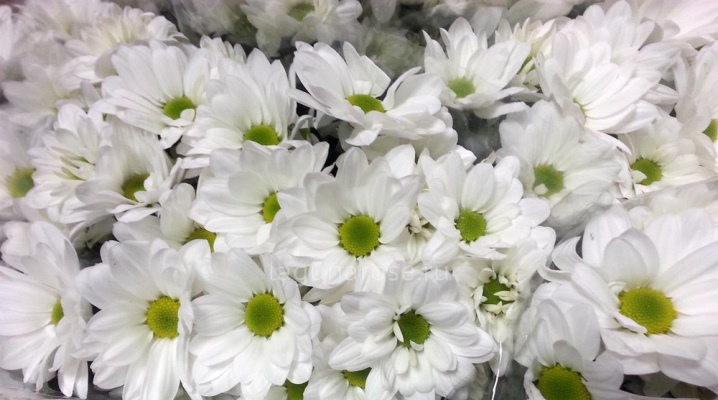
Chrysanthemum "Bacardi" is a new variety that belongs to the bush varieties. The plant has very colorful single flowers, which is why it is often used in bouquets and a variety of floral arrangements.
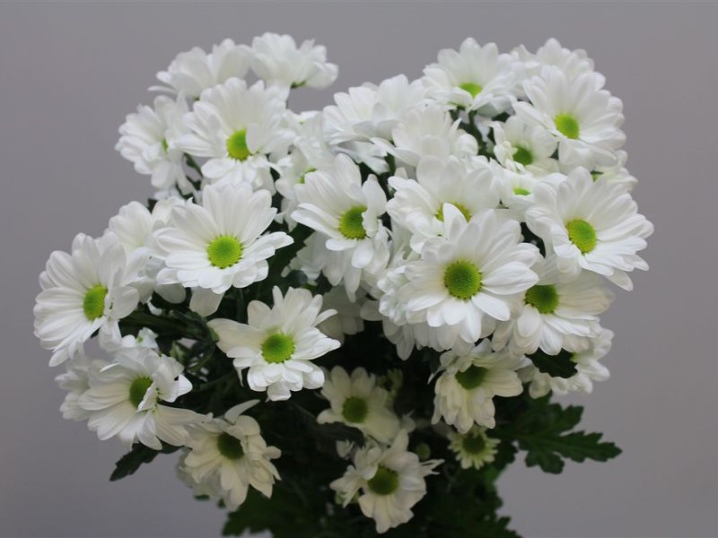
Peculiarities
Bacardi has a fairly resilient stem that holds its shape well for a long time after cutting. The bush is tall and can grow up to 1.5 m.
Although the stem is quite sturdy, sometimes the plant still needs a garter.
Chrysanthemum flowers in appearance resemble dense daisies, their diameter is 6-7 cm. The core is small, about 1.5 cm, yellow or greenish, convex in shape.
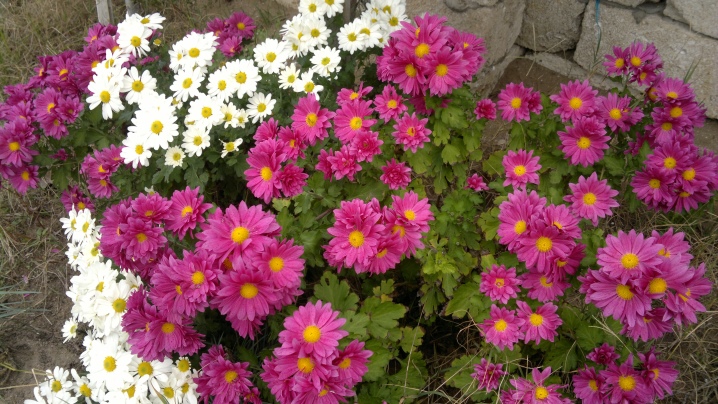
The petals have a different color depending on the subspecies of the bush.
The leaves of the plant are similar in shape to oak, they have a dark green color. This variety belongs to the early flowering, the buds bloom in July and delight with their flowering until September. Chrysanthemum "Bacardi" can be grown equally well both in flower beds and in pots. This variety is quite popular due to its ability to keep freshness in cut form for a long time.
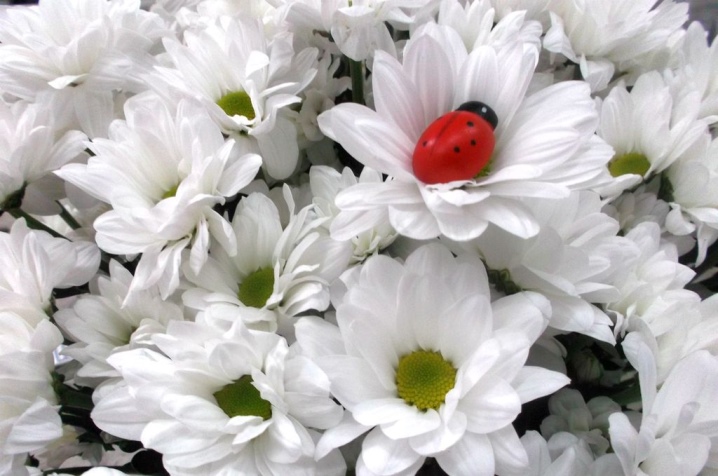
In addition, the variety is used as interior decoration, planted in front gardens and in various flower beds. White chrysanthemums are used to decorate wedding bouquets and halls for this solemn event. The structure of the petals allows you to apply paint or glitter to them, making them look even more effective.
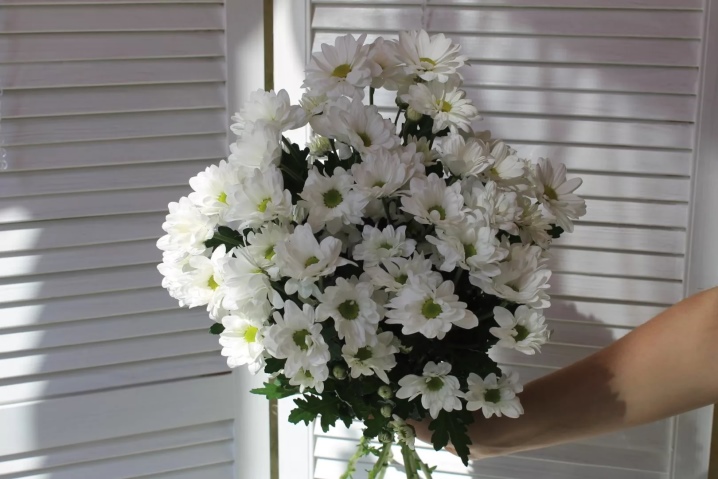
Varieties
Chrysanthemum Bacardi differs in a rather varied colors.
- "White" - a garden variety with luxurious snow-white inflorescences of a rather lush structure. The middle of the flower is yellowish-green. The bush reaches a height of 70 cm. It looks very impressive in a bouquet.
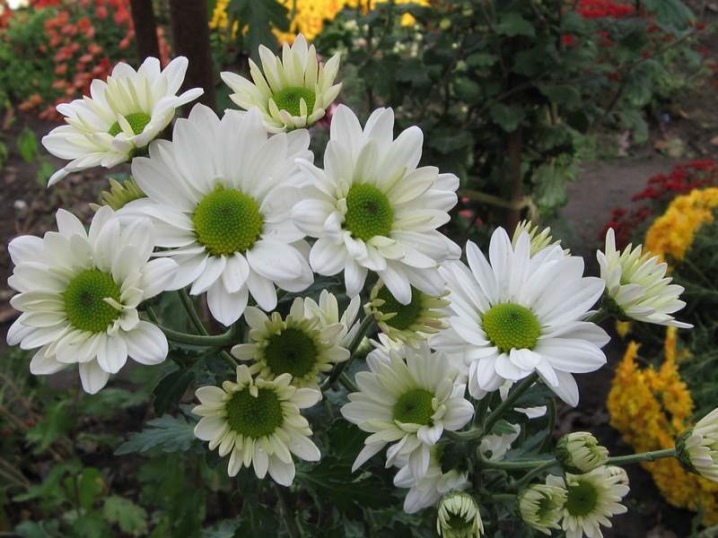
- "Pink" characterized by pink petals. They are used for decorating wedding baskets and as interior decor. Often in bouquets, pink is diluted with white, together they look very delicate.
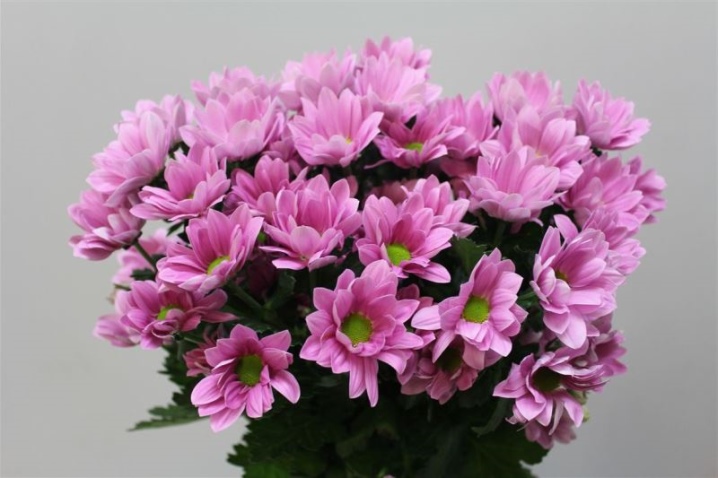
- "Crimi" has flowers of a delicate cream shade with a golden center. Used as a component of bouquets with other flowers.

- "Bordeaux" - single inflorescences are distinguished by a rich burgundy hue and a yellowish-green core. Look very impressive in combination with white chrysanthemum.
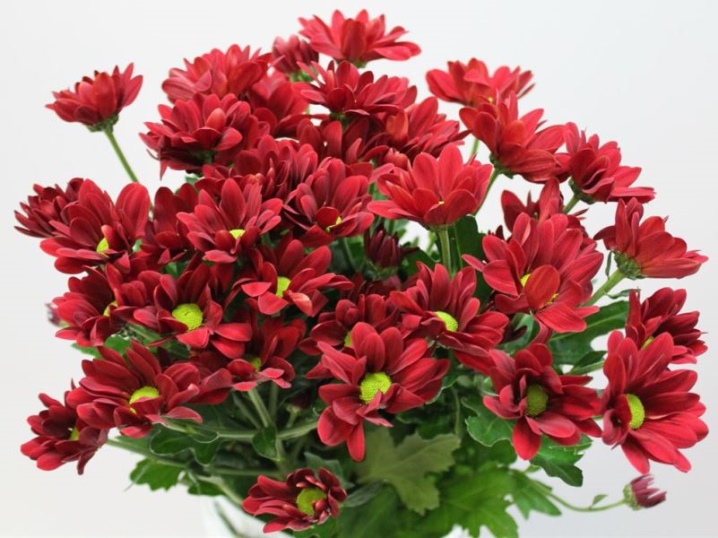
- "Sunny" notable for the lemon-yellow color of the petals. This bouquet looks extremely bright and sunny.

- Celebrate belongs to small-flowered varieties, which were bred specifically for cutting. It is distinguished by the bright yellow coloring of the reed petals, which are located in three rows, and the yellowish-green center of the bud. The flowering of the bush is characterized by abundance and a long period.
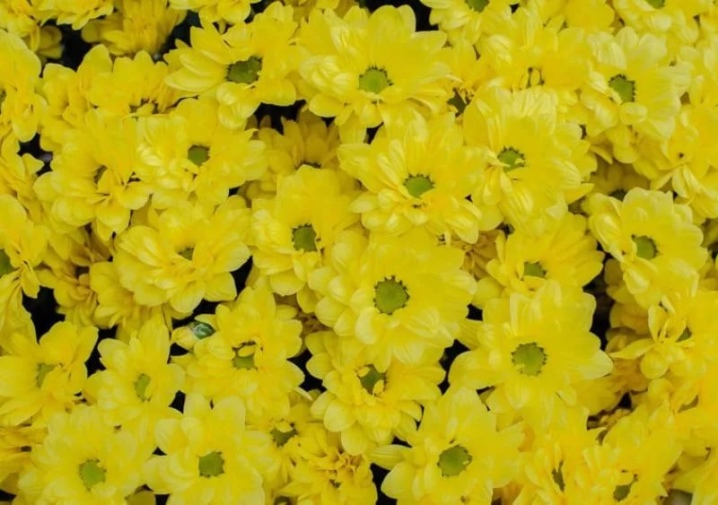
How to plant?
The cultivation of this variety is not particularly different from other varieties. For planting Bacardi, an area that is well lit and located on a hill is optimal, so that there is no stagnation of moisture at the roots of the bush. In addition, it must be protected from the wind.
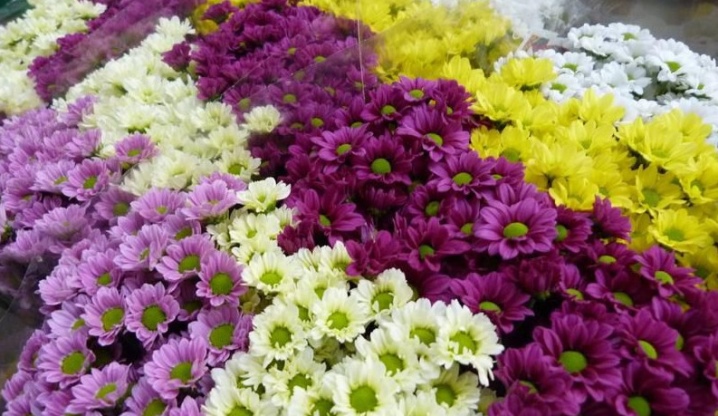
The plant loves the soil fertile with a neutral PH-level, moreover, it must pass moisture and air well. If the land on the site is not very loose and scarce, then it is worth feeding it with organic matter before planting, and also adding drainage: coarse sand or sawdust.
It is worth planting chrysanthemum bushes in the spring, the soil should be warmed up to at least + 12-15 degrees.
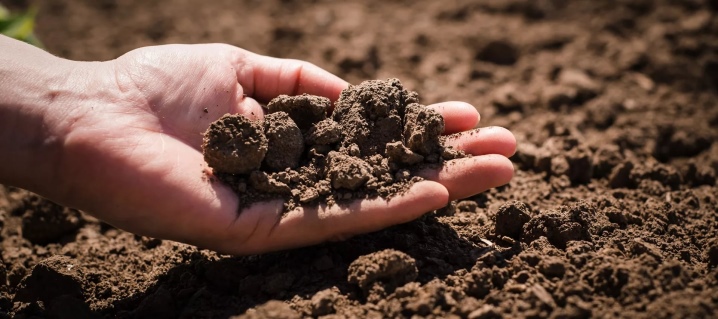
For planting, holes are dug with a depth of 15-20 cm, a little sand is poured on the bottom.The bushes are staggered, keeping a distance of 25-40 cm between them, the seedlings should not be greatly deepened. After planting, the soil around the flower must be well compacted so that the seedlings do not stretch too much, and the flowering becomes more abundant. You can cover young bushes with agrofibre at night.
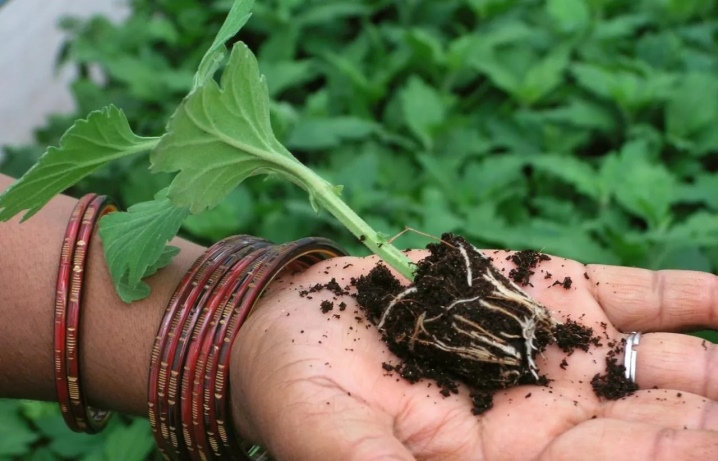
A bush can grow in one place for 5 years, after which it is recommended to transplant it.
A rejuvenating transplant consists of digging up a chrysanthemum and dividing it into several smaller bushes, which are immediately planted in a separate place. This procedure is recommended in the fall.
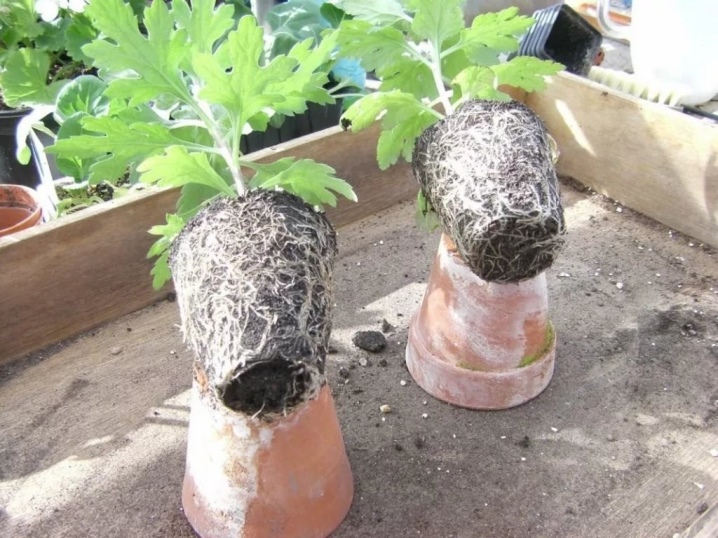
Correct care
With good care, chrysanthemum will delight with long and abundant flowering.
- The plant needs abundant watering, since its roots are located near the soil surface.
With insufficient moisture, the stems of the flower become lignified, and the inflorescences become loose and few in number.
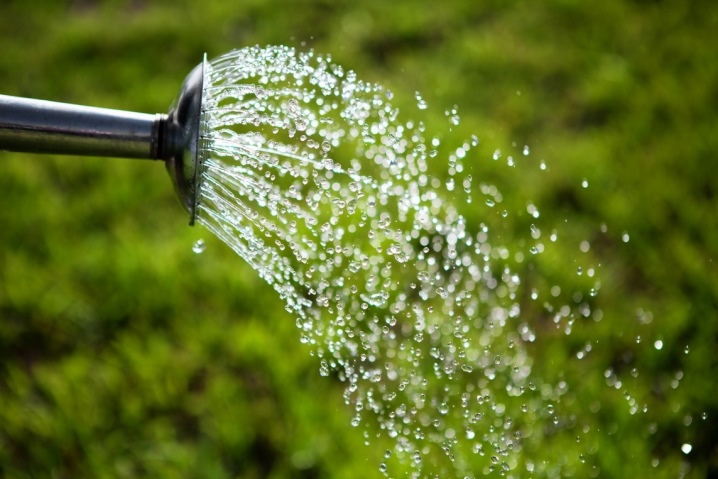
It is better to take water for irrigation settled or rainwater, it is recommended to add two drops of ammonia to it. It is necessary to water the bush at the root, after moistening the ground around the flower should be well loosened, but this must be done carefully so as not to damage the root system. You can also mulch the bushes, this procedure helps to conserve moisture.

- Chrysanthemum needs systematic feeding. With the beginning of the growing season, it is worth using fertilizers containing nitrogen, they help the plant in the rapid growth of green mass. Before budding begins, potash and phosphorus fertilizers need to be added, which will activate lush flowering.

It is recommended to make top dressing liquid, pouring it under the root of the plant, it is appropriate to do this two days after watering or rain. The first time the chrysanthemum is fertilized after 2 weeks after planting, for this 20 g of ammonium nitrate and azophoska are diluted in 10 liters of water and the plant is watered.
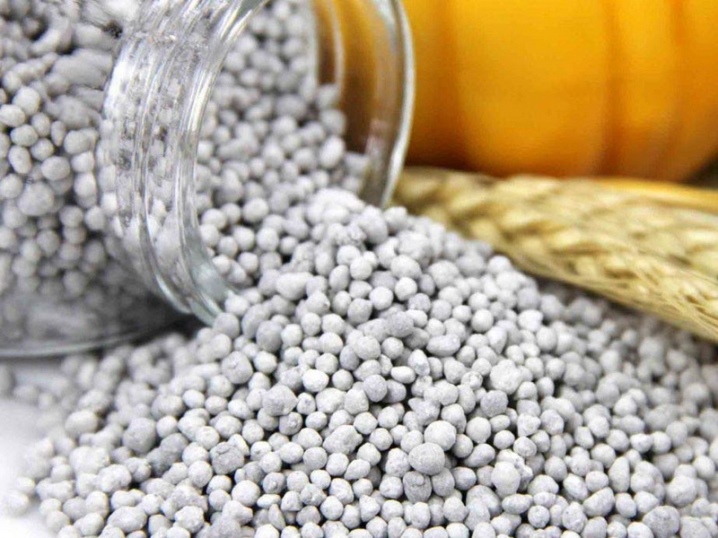
- The formation of a bush is necessary for a beautiful and well-groomed type of plant; they do this with the help of a pinch, which is performed in the summer. Using this procedure, pinch the tops of the shoots until the buds appear. Thus, the bush forms a lush crown, sometimes up to 40 flowers are formed on it. This operation promotes long and abundant flowering.
It is also worth removing stepchildren growing from the axils of the leaves, and in the summer, remove the shoots and buds that form on the sides.

- Preparing for wintering will help the plant to survive the winter normally in open soil. To increase the immunity of the bush and add more resistance to cold weather, it is worth feeding the chrysanthemum with phosphorus-potassium fertilizers. The flower is resistant to autumn frosts, but with the onset of frost, it must be cut off at a height of 10 cm from the soil and covered with dry leaves.
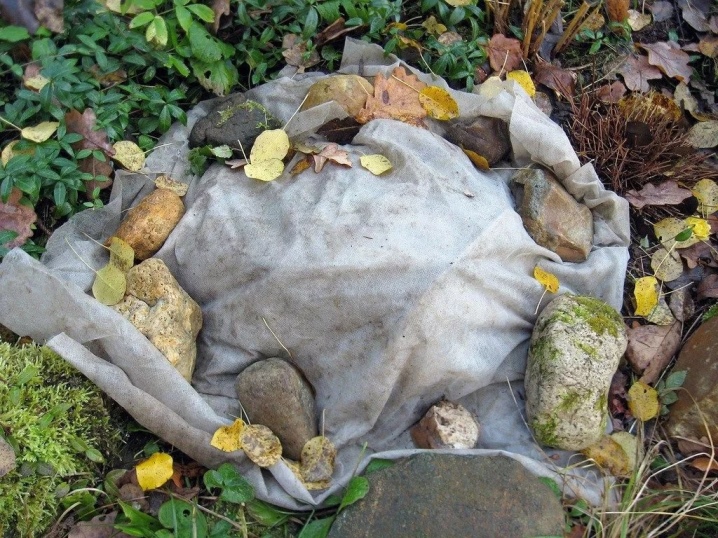
Diseases and pests
Chrysanthemum Bacardi is prone to fungal and viral diseases.
- Verticillosis expressed by wilted or twisted leaf plates at the bottom of the stem. After some time, they become covered with yellowish-brown spots, then dry out and fall off. Without help, the bush will die. Treatment is carried out with fungicides.
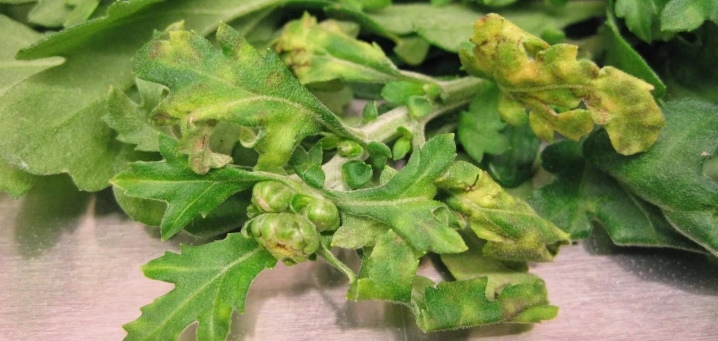
- Powdery mildew affects the leaves of the plant, they acquire an ash-gray bloom with a whitish tint. Excess moisture contributes to the reproduction of the fungus. Spraying with fungicides is effective against disease.
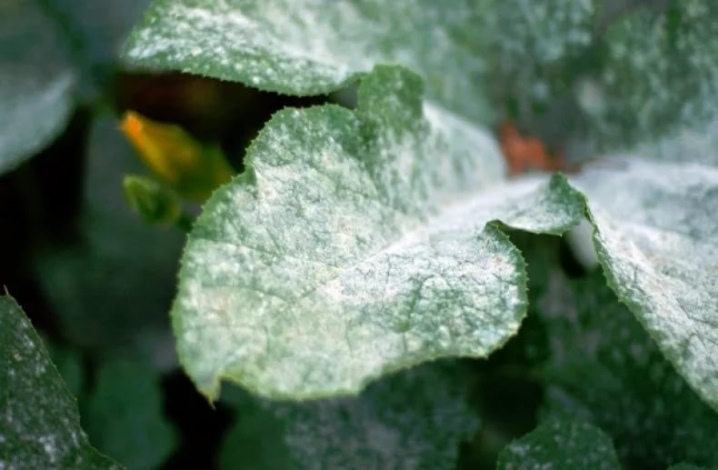
Also, some parasites can cause trouble for the plant.
- A spider mite can cause significant damage to a flower. These tiny insects suck the sap from the leaves, which causes the flowers to become loose, the leaf plates fall off and over time the plant dries up.
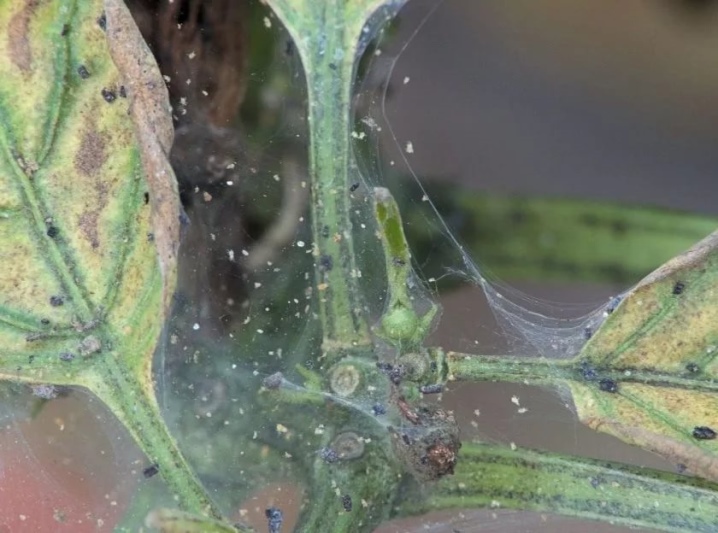
- Nematodes - miniature worms living in the soil often infect horticultural crops. The leaf plates of infected plants acquire brownish spots, which eventually merge into one, the foliage dries up and falls off, as a result the flower dies.
The fight against these pests consists in the autumn processing of the soil with the preparation "Phosphamide", and near the bush itself it is worth spraying the soil with "Formalin".
In summer, it is recommended to treat chrysanthemum bushes with special sprays.

Chrysanthemum "Bacardi" does not require special care, but with proper care it will thank you with abundant flowering, and also decorate the site with spectacular and at the same time delicate buds.
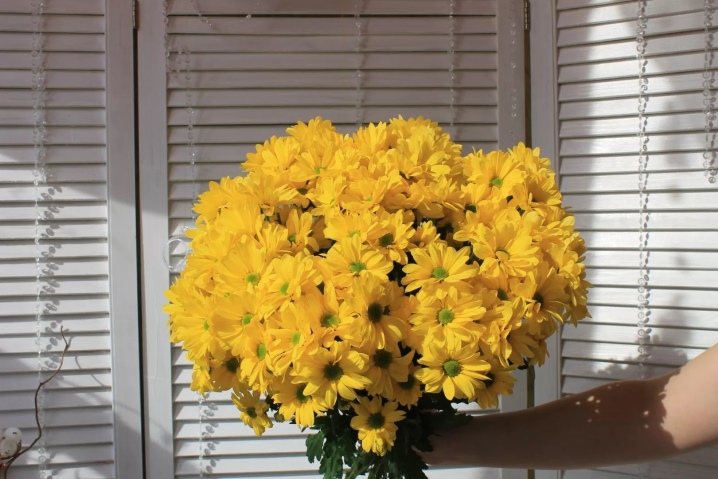
In the next video, you will learn two simple and effective ways to root a chrysanthemum from a bouquet.







































































































The comment was sent successfully.